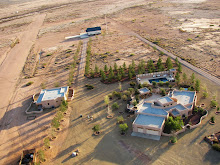Flying and falling are completely different sensations. Falling has a sickening gut wrenching vertical component while flying has a wind in your face horizontal component that feels relaxing. In most aircraft the difference between the 2 is marked on the airspeed indicator and student pilots are taught to keep track of airspeed and not to transgress the boundary while in the air. Aircraft with large speed envelops can fly pretty much at whatever speed they choose, but in weight shift control (WSC) aircraft it is a completely different proposition. There are really only 2 conditions a pilot can experience in the air, flying and not flying, and not flying translates into falling so an airspeed indicator is somewhat superfluous because most people can easily tell the difference without any training. Although found on many WSC aircraft they generally add to the flash and glitz of the aircraft but unless specified on the manufacturers minimum equipment list or required by the operating limitations it is not required on WSC light sport aircraft. In addition, unless calibrated, an airspeed indicator is of little use since indicated airspeed and calibrated airspeed can vary greatly, I‘ve seen 10-15 mph differences. When your cruise speed is 65 mph and stall is in the low 30’s a 10 mph difference is pretty large so many WSC pilots rely on the feel of the aircraft and bar position to gauge airspeed generally asking themselves “do I have good control authority?” Which translates to “am I going fast enough to avoid that sickening gut wrenching feeling of falling“? If flying straight and level at cruise power there is little concern but slow flight and stalls (both part of the practical) require the pilot to know their airspeed and avoid falling (or arrest the fall in the case of stalls).
Since an airspeed indicator is required for the practical test a candidate will have to watch this instrument to maintain airspeeds within the parameters defined in the PTS during the flight portion of the practical.
Also, if your someone who flies around with the bar pulled in and a higher throttle setting then you will probably be cruising at a speed higher than the manufacturers maneuvering speed. When you hit rough conditions and want to avoid overstressing the airframe it might be a good idea to let the bar to trim and go with the flow.
Finally landings, how fast should they be?, well fast enough. Again good control authority is required to keep a landing from becoming a low altitude fall. And remember gravity always wins , so don‘t sweat the program.
Subscribe to:
Post Comments (Atom)








No comments:
Post a Comment